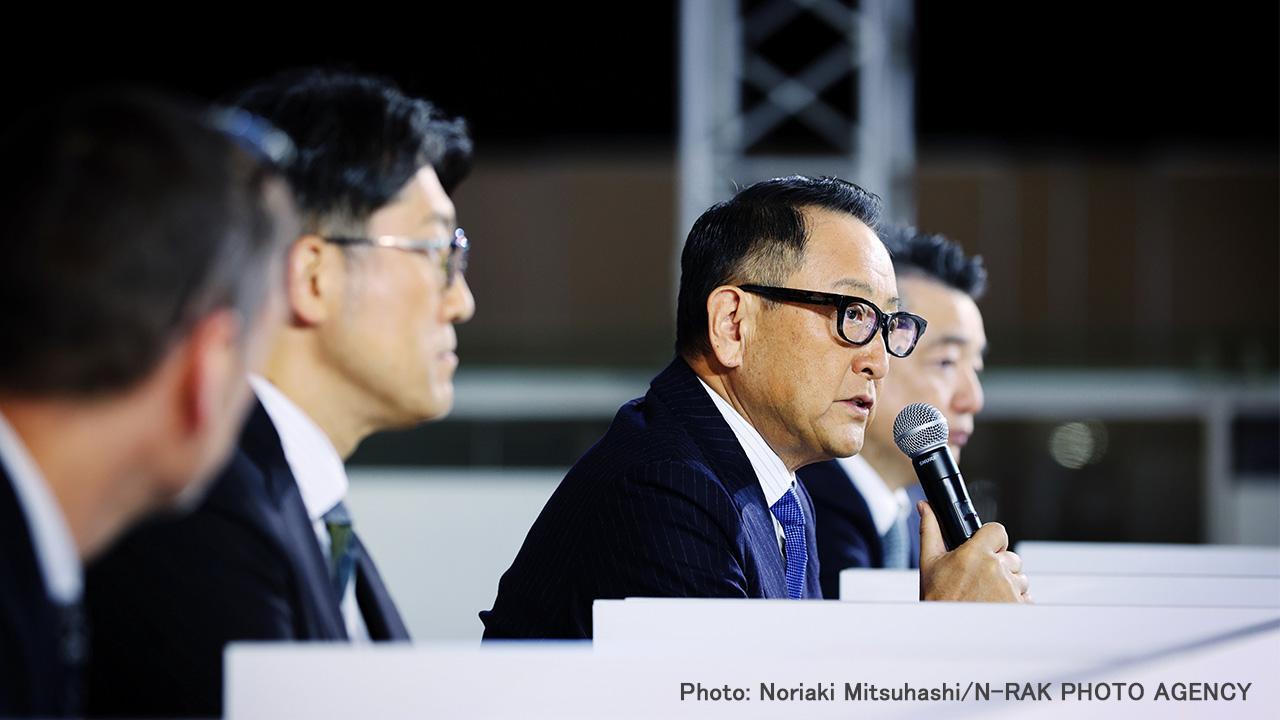
This article looks into the responses by four key speakers to media questions about Toyota's battery EV strategy announcement of Dec. 14. The underlying message is that the company's approach of providing full-lineup options is a sincere one.

At Toyota’s battery EV (BEV) strategy briefing on December 14, there was a Q&A session with the media after President Akio Toyoda’s presentation. Joining Akio were Lexus International President and Chief Branding Officer (CBO) Koji Sato, Chief Technology Officer (CTO) Masahiko Maeda, and Design Senior General Manager Simon Humphries.
Here, Toyota Times looks into the key speakers’ responses about Toyota’s BEV initiatives.
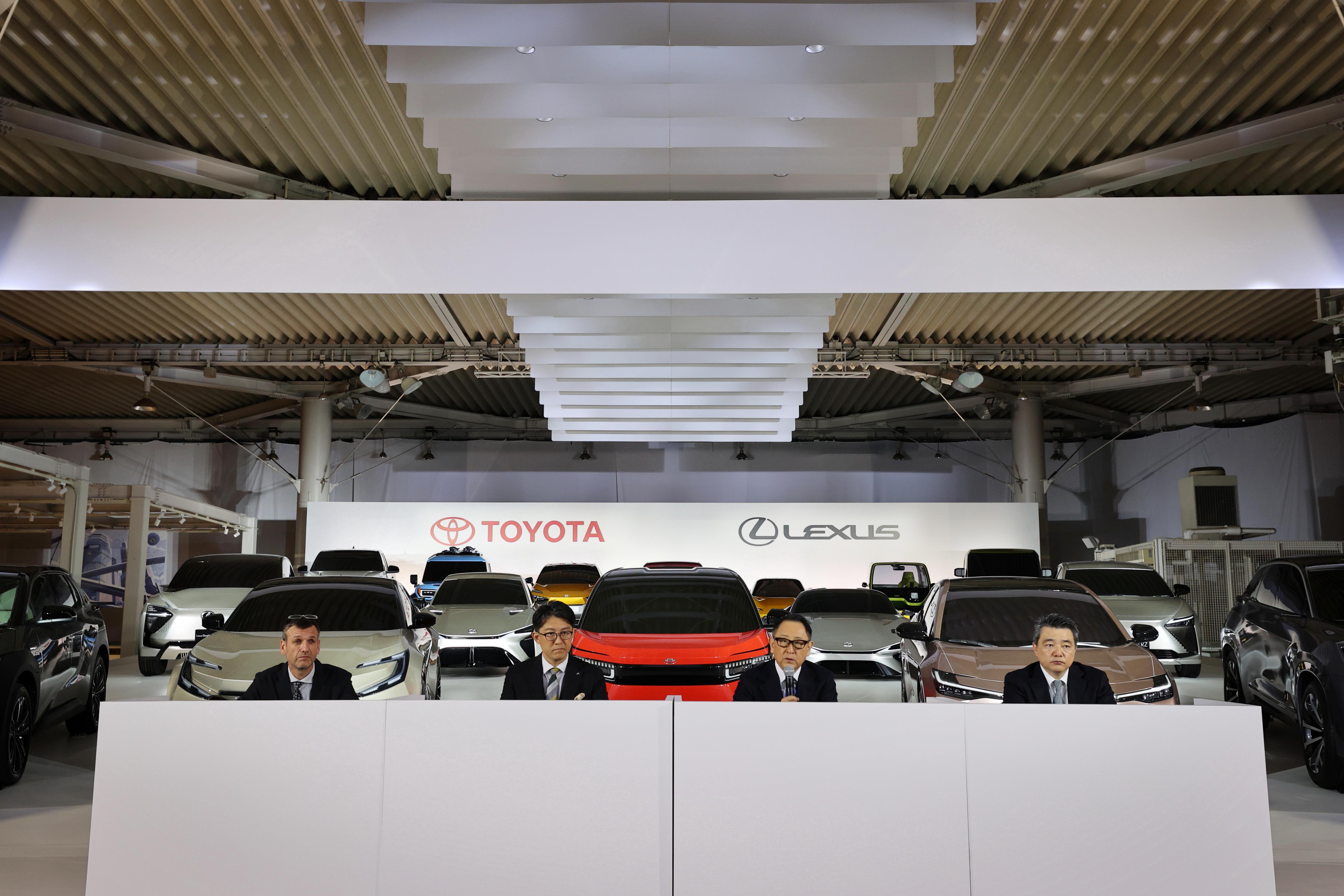
Why the BEV sales forecast to 2030 has been revised upward
- What is the reason for this large upward revision from 2 million BEVs by 2030 to 3.5 million?
The 2 million units mentioned by the reporter was the initial forecast Toyota announced back in May, which in fact are sales of zero emission vehicles and includes fuel cell electric vehicles. Only seven months later, Toyota has added 1.5 million more BEVs and revealed a new guideline of 3.5 million BEVs.
Akio was the first to explain, followed by other speakers.
Akio
Firstly, the 2 million units of zero emission vehicles is a significant amount. Most Chinese automobile companies have roughly the same amount of vehicle sales. To that, we are adding another 1.5 million to make it 3.5 million, which is equivalent to the volume of Daimler, PSA, and Suzuki Motors if they make all vehicles BEVs.

Regardless of the powertrain, whether it is a BEV or an FCEV, what matters in achieving carbon neutrality is the energy that the vehicle uses. Whether the vehicles are carbon-reducing vehicles or carbon-neutral vehicles will rely on the energy situation in each region.
At COP26 this year, various countries’ policies became clear through the process. As that happened, after revisiting our plan, we realized that we could achieve a higher level of carbon-neutral vehicles sales than previously anticipated. We came up with this revised figure after that discussion and plan review.
Maeda
As President Toyoda just described, the revision came as we have seen the rapid changes in the market, such as the recent executive order in the U.S. Against this backdrop, we discussed a possible volume that we believe we would be prepared to deliver.
As we said in our previous financial results announcements, this volume is a guideline and one which we will use for the necessary preparations for development, procurement, and other investments as needed.
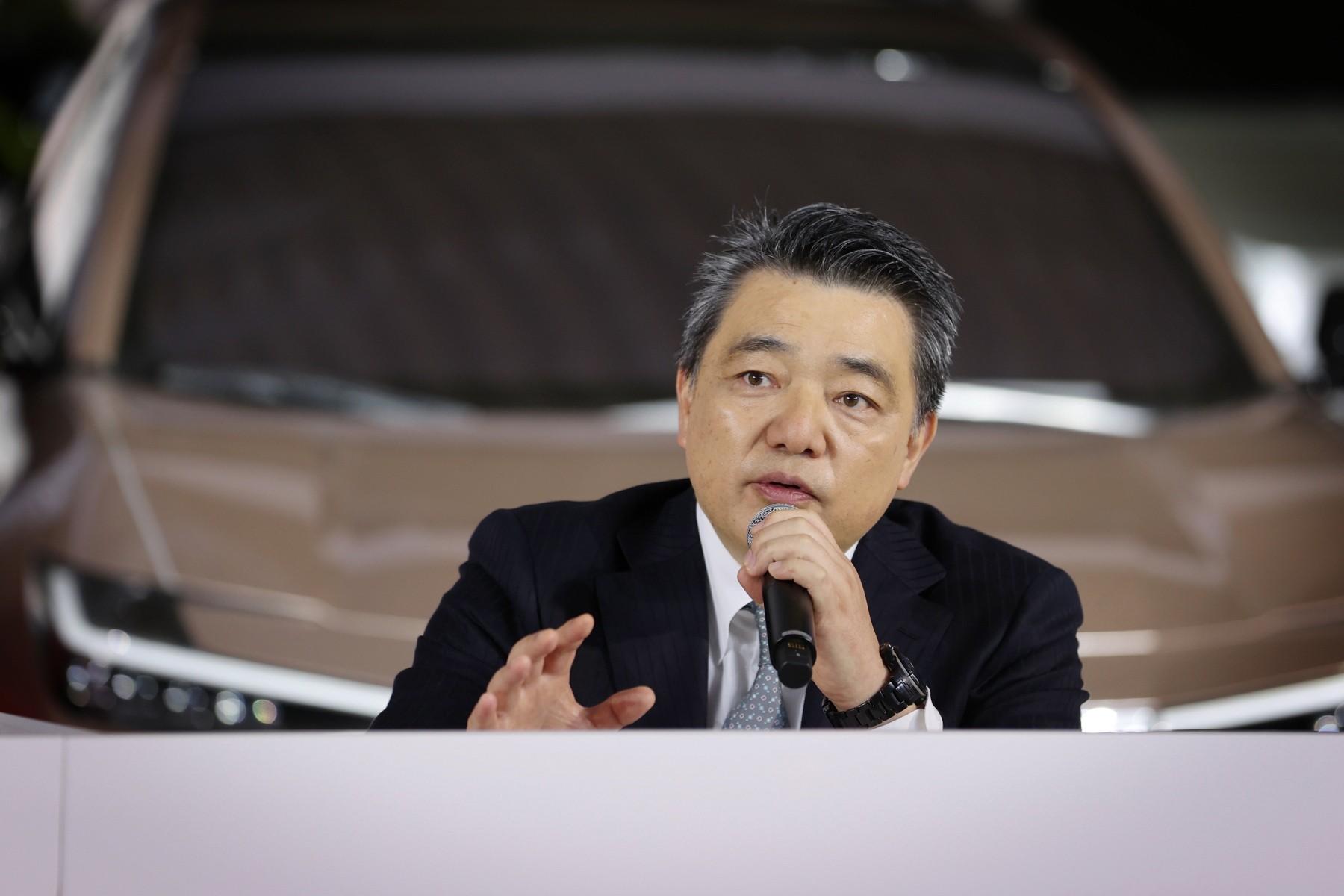
Sato
This time, we announced that Lexus will anticipate 1 million units of BEV sales by 2030. Back in March, Lexus announced its vehicle electrification initiatives called “Lexus Electrified”, and committed to accelerating wide-spread sales of Lexus electrified vehicles by 2025.
As the world changes rapidly, customer expectations toward advanced technologies and BEVs have become higher and higher, especially in the luxury segment.
We announced this target in order to be able to flexibly meet rapidly changing customer preferences.
Once we set this guideline, we will be able to take action and examine the issues. By understanding those issues, we will be able to accelerate our efforts and take action with a clear purpose. We would like you to understand that element of the background as well.
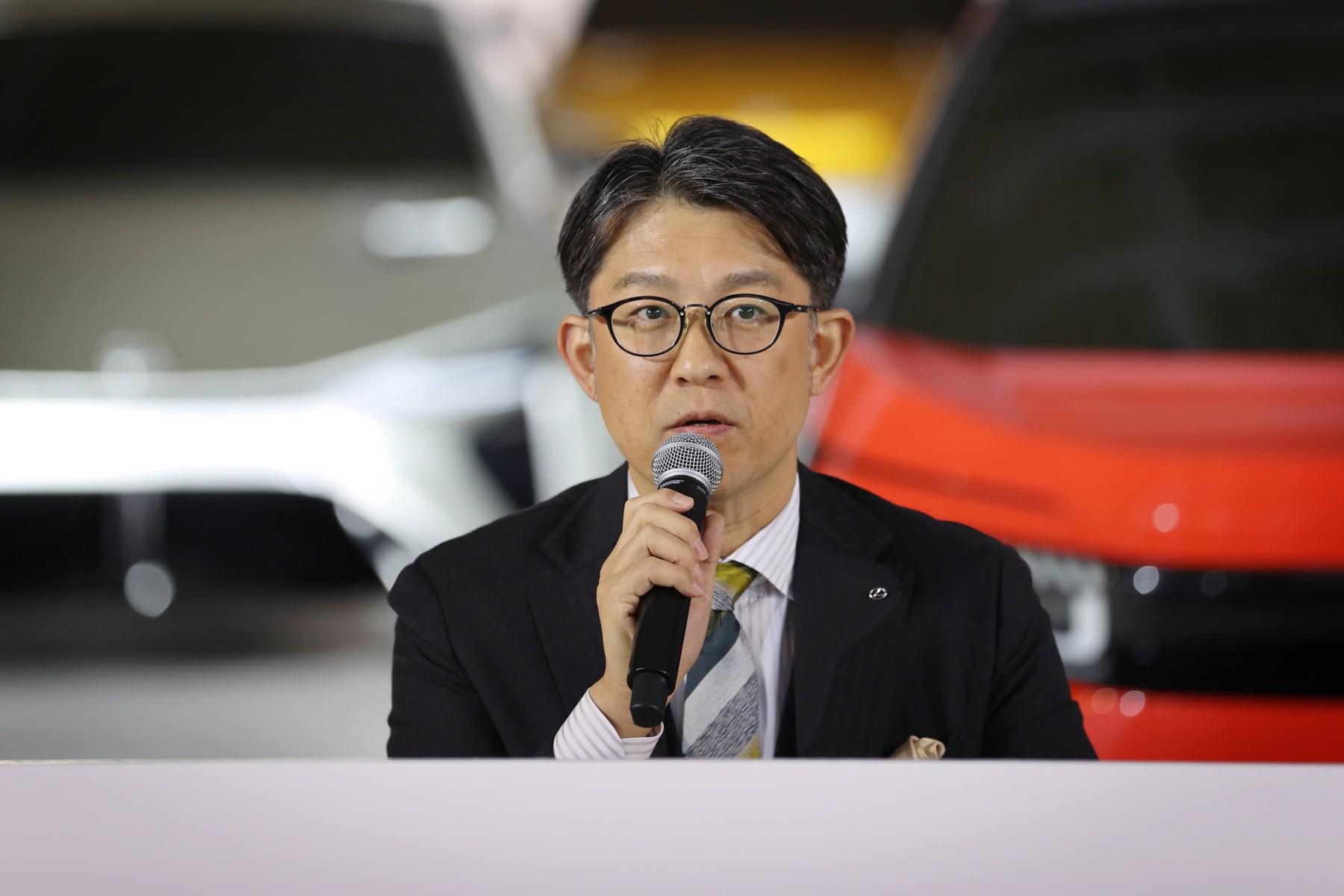
Is this a strictly BEV shift or part of a multi-solution approach?
- Going forward, are you going to focus more on BEVs amid a variety of other electrified vehicles? Or has your strategy of BEVs being just one part of a full lineup of electrified vehicles not changed?
Toyota’s consistent approach to vehicle electrification has been a multi-solution strategy. The company has committed to offering a wide variety of products to meet diverse customer needs, instead of focusing on fewer choices.
In his presentation, Akio clarified his stance on the multi-solution strategy, saying “we want to keep options available for our customers.”
However, one might think that Toyota is shifting its focus to BEVs, with the upward revision of the sales volume, Lexus becoming a brand dedicated to BEVs, and the growing investment of 4 trillion yen for BEVs (including 2 trillion yen for batteries).
The reporter was trying to reconfirm Toyota’s stance on BEVs from this perspective. Akio responded first to this question.
Akio
We have made utmost efforts toward achieving carbon neutrality, and we will continue to do so going forward.
Toyota is a global company with a full lineup of products. We have seen changes in the energy situation in each country, and the way customers use vehicles is now more diversified.
It is the customers, not us at Toyota, who choose which options to use. So, no solution will come from our decision alone.
What we will do is have a wider range of available options, and to make serious efforts across our full lineup of options.
We want to be prepared to meet customer and market expectations and preferences more quickly, and more flexibly. In this way, I believe that we will be able to enhance our competitiveness, and that is how we will be able to survive.
Just because I drive a hydrogen-powered vehicle, it does not mean that I am prioritizing it over others.
All of our employees, suppliers, affiliated companies, and the 5.5 million people working in the automobile industry, have made serious efforts in Japan in achieving carbon neutrality.
For us at Toyota, we do business and operate worldwide, and the full lineup of products is key in our global operation. I hope you see that we are putting serious effort into this approach.
Humphries added a comment from the standpoint of diversity and customer thinking.
Humphries
I think the future is of course very difficult to understand for everyone. But within that future, one thing we can probably say for sure is that each region and all of society is becoming more diverse.
So, the next step for Toyota is to build on our strengths and understanding what customers really want, and within that diversity we see customers more confident with their choices especially with regard to product and design.
What we need to do now with the biggest hurdle or challenge is to increase customer acceptability of the carbon-neutral base design.
In principle, all people agree this kind of direction is a necessity, but whether or not they are willing to accept this in practice is the next big hurdle. For example, using reusable fabric, reusable materials, all these kinds of factors will have to change the way of customer thinking.
Then we can start to talk about achieving the numbers we have talked about.
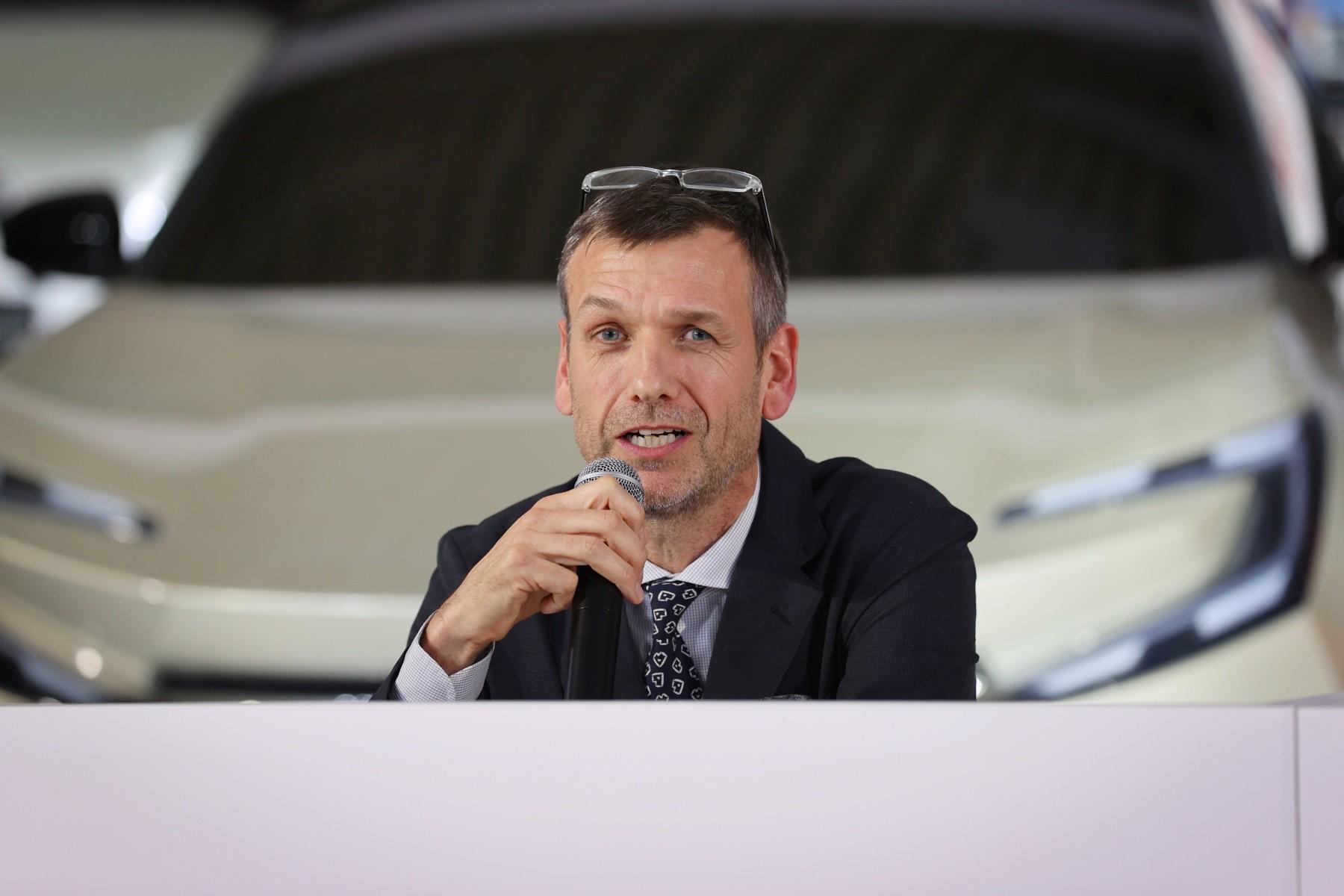
However, continuing efforts in all directions will require significant investment. In response to the two answers above, Sato explained the two-pronged effort that makes the multi-solution strategy possible.
Sato
We are working on two areas to help maintain this full-lineup strategy. One is making the development process more efficient. Compared to previous models, our development efficiency has been improved by 30 to 40%.
Our efforts over the last decade in creating a high quality modular basic vehicle platform through Toyota New Global Architecture (TNGA) has contributed a lot there. Now, as we expand our BEV lineup, we have our solid basic capabilities.
One other area is branding. We will clarify the role of the Lexus brand within the company, which is to be a front runner in advanced technology areas and to lead our BEV products.
As for GAZOO Racing, we will continue to take on the challenges of achieving carbon-neutral fuels through motorsports.
Toyota’s strength lies in leveraging each brand’s role and strength as we explore a wide range of technologies. This is how we want to continue our full lineup strategy.
Why not pursue 100% BEVs across the whole lineup?
- As the largest carmaker in the world, why are you only targeting 35% of your current volume? Why not go for 100% or 50% as many of your competitors have done now? Why is 3.5 million sufficient in your mind?
As Akio pointed out at the beginning, the upwardly revised figure of 3.5 million global BEV sales is equivalent to the sales of one of the top ten automakers in the world.
However, in many cases, the assessment of an automaker’s attitude toward BEVs is not based on the absolute number of vehicles sales, but on the sales ratio. This question reflects precisely that attitude.
Akio took the microphone first to convey Toyota's seriousness and to help the audience grasp the difference between Toyota and other companies.
Akio
With a baseline toward 2030, we want to increase our carbon-neutral vehicles as much as possible.
However, the energy situations in each country have had a big impact on the path to carbon neutrality. That is the reality. I hope you understand that it is something Toyota cannot control.
If there is no sufficient clean energy and charging infrastructure, expanding our BEVs and limiting options for customers in such a market will result in bringing inconvenience to customers. We want to avoid that.
When we look at the global market, it is a diversified market that we are dealing with, and that is what Toyota does.
Diverse solutions are necessary in diverse situations. Also, the best solution for the average person will not necessarily be the best solution for everyone.
Therefore, as we are in an uncharted era with lots of uncertainty about the future, we want to take a diversified approach. That is why we have worked hard to maintain our full lineup. We will take on this challenge together with our suppliers, affiliated companies, and partners. That is what I would like you to understand.
Toyota vehicles are used all over the world to fill various needs, not just for one particular market or one specific need. Some are used in urban areas, others in rural areas with poor infrastructure. They are also used in harsh environments such as deserts and coal mines.
Toyota offers diverse customers a wide range of vehicles, from passenger cars to commercial vehicles, and from daily use vehicles to luxury cars. The question is whether it is realistic for such a company to make 100% of its vehicles BEVs.
Maeda answered this question by using an example of a BEV-advanced country.
Maeda
I think we need to take a look at which market is most advanced in BEV introduction. For example, in Norway, 60 to 70% of their passenger car market is already BEVs.
This is because BEVs enjoy preferable treatments such as in taxation, free parking, and free tolls. I believe that BEVs are convenient to users there.
However, these taxation and rules are not something we can control, so I think we need to take a careful look at the reasons why BEVs are widely available and chosen by customers in certain markets.
We have made our commitment in BEVs clearer, and going forward, we also need to closely watch the situations that influence a customer’s choice. I think we need to move forward step by step while doing so.
Therefore, we need to deal with the changes that we will face flexibly in an agile way. It’s very important for us now to prepare for the changes, by shortening the lead time as much as possible.
Thoughts on preserving jobs
- Your suppliers are closely watching this announcement, since some of them could face major impacts. What are your thoughts on employment within the industry?
Since the end of last year, in his other role as chairman of the Japan Automobile Manufacturers Associations (JAMA), Akio has pointed out that the rapid shift to BEVs would lead to risking automotive jobs.
The question was about whether he has changed his stance on the employment issue as he announces this enhancement of Toyota’s BEV strategy. Akio responded to this question, expressing his passion for suppliers and, by extension, the automotive industry.
Akio
First of all, it is the market and customers who decide which carbon-neutral options to choose. This is the premise here.
The numbers related to carbon neutrality that we have heard so far are goals for 2040 or 2050.
We don’t want to be a company that appeals a target but doesn’t care to achieve it when the announcement is done. What we are announcing today is a bit more in the near term. Many of the cars that you are looking at right now will be launched into the market very soon.
Running up to 2030, what we present today will be a good tool to start discussions and take action with various stakeholders while being able to imagine more what the next 8 years will be like.
By presenting a guideline in the product planning area, we will be able to examine potential impact to our suppliers or our production plants.
As the chairman of JAMA, I have warned that 1 million jobs out of 5.5 million people in the automotive industry would be lost if all new car sales become 100% BEVs in Japan. At that time, different companies came out with some vague target numbers and not any specific figures or road maps to achieve them.
But now recently, we have seen more concrete plans of the near-term future from different OEMs. Now as Toyota, we’re also coming up with very concrete plans including the models to be launched. We’ll have a renewed discussion based on this.
The automotive industry comprises of 75% of the components procured from suppliers and there are tier one, tier two and tier three suppliers supporting the industry. Even if we emphasize the importance of keeping many options available, that change becomes a critical issue for suppliers who have only produced engine-related parts.
We shouldn’t just say that it changed because the market chose it. I would like to make the automotive industry such that the people and companies who have been doing a certain business for a long time, no matter what kind of work they do or the size of the company, will not be disappointed about their lives and we will continue to show respect for their meaningful work.
The future is not determined by the goals presented by leaders, but by purposeful passion and action. Toward the goal for carbon neutrality in 2050, the view of the future in 2050 will change depending on how we act in the next few years, five years, and ten years, and we want to make the change happen.
The future will not suddenly jump from the present to the future, but the future will be created by the accumulation of the present and the past. We hope that you will allow us to leave many options open in this process.
It is not true that we are not fully committed because it’s not 100%. We hope you will understand that we would very much like to continue our work in this industry.
Evaluation by environmental groups and the future of engines and BEVs
- An environmental group put Toyota at the bottom of the climate action rankings. Let me ask you again. What is the position of BEVs for Toyota? Also, what is the future plan for engine development?
Last month, one environmental group ranked Toyota the lowest in its climate action ranking of automakers, which has become a major topic of discussion.
From early on, Toyota has been making more efforts to promote more fuel efficiency engines and electrified vehicles, including hybrid electric vehicles, to reduce CO2 emissions more than any other automaker. Currently, Toyota is in the most advantageous position to comply with strict fuel efficiency regulations, but the company received the unfortunate ranking.
Akio asked the other three speakers to respond first, saying “I would also like to hear how they answer.” Maeda first explained his ideas on how to deal with engine development.
Maeda
As an industrial manufacturer of goods, the engine is technology which can be dubbed as artistic because it has enabled many consumers a comfortable high quality of life. It’s a very important tool for achieving that result.
As President Toyoda says, carbon is our enemy. If we don’t produce any carbon emissions when burning fuels, we can continue to provide customers with convenience by offering engine-powered vehicles.
In reality, carbon-neutral bioethanol fuel is being put to practical use in Brazil at a lower distribution price than gasoline. Our hybrid electric vehicles can now run on the biofuel and make the energy use more efficient.
We already practice that technology in a certain market, and we don’t hear any complaints from the consumers in that market.
We are selling a sizable number of those vehicles there. That is why, although the number may decrease, we want internal combustion engines to be part of our full lineup options for carbon neutrality.
With regard to BEVs, Sato expressed major expectations for the future as President of Lexus, which is aiming for 100% BEVs by 2035. Humphries made another comment after Sato.
Sato
Not only with BEVs, but also with other powertrains, we want to deliver a wonderful experience to consumers through our cars. We want to create exciting cars.
Internal combustion engines provide certain excitement, with the smell of oil and the sound of the engine. BEVs, on the other hand, have a different form of excitement.
BEVs use electricity and electric motors for wonderful responsiveness with smooth acceleration and deceleration, and quietness. This is something internal combustion engines don’t have.
Especially in the luxury segment, customers are looking for acceleration. Electric motors may be able to offer greater performance that engines cannot.
I actually think the time has come now. We spent about 10 years under the Master Driver Toyoda, going through tough trials to improve our cars. We’ve been trying to figure out what makes a Toyota or Lexus car unique.
It took 10 years for us to come up with a BEV which can make Akio Toyoda smile a little, finally. I think BEVs are a catalyst for making cars more fun and enjoyable. In particular, electrification technologies are very effective in controlling the vehicle’s driving power.
So, believing that BEVs will give us an opportunity for a more exciting future, Lexus is going to shift toward BEVs.
Humphries
An EV era is really an opportunity for new experiences for the customer, and to be able to do something that’s proactively fun and exciting at the same time, has some value toward future carbon neutrality. This is an incredibly exciting time.
So, what I want to say more than anything is, sometimes it’s easy to look at the rational side first, but actually the chance or the opportunities are going to come on the emotional side as well.
We’ve heard for the last 10 years or so that people have lost interest in cars and vehicles, but I think it’s exactly the opposite now.
I think there’s an incredible potential to open up not only with the electric powertrain, but also connecting through digital data and creating incredible new experiences for people. That’s my take on it.
Concluding Toyota’s response, Akio explained Toyota’s commitment to car manufacturing.
Akio
It is their ranking, so we take it seriously, but if we are still not considered proactive toward BEVs with our 3.5 million BEVs and 30 new models to come, what should we do? If that’s the case, I would like to ask them to let us know what would improve their evaluation.
Things look differently if we go by percentage or by absolute numbers. Vehicles are for individual customers. One vehicle, for one customer. It’s not a percentage business, it’s the absolute numbers that we want them to look at when evaluating.
No matter how many vehicles we sell, we will make and deliver them to customers one by one, without compromise.
Whatever powertrain it is, or whatever type of BEVs it is, Toyota and Lexus vehicles should continue to offer the value of fun to drive. We will continue to make products with the unique character of Toyota and Lexus that make customers happy.
We will continue to take proactive action for carbon neutrality. In a world where there is no right answer, we are committed to solving problems with a wide variety of options. We hope you understand that we are working really hard on every option.
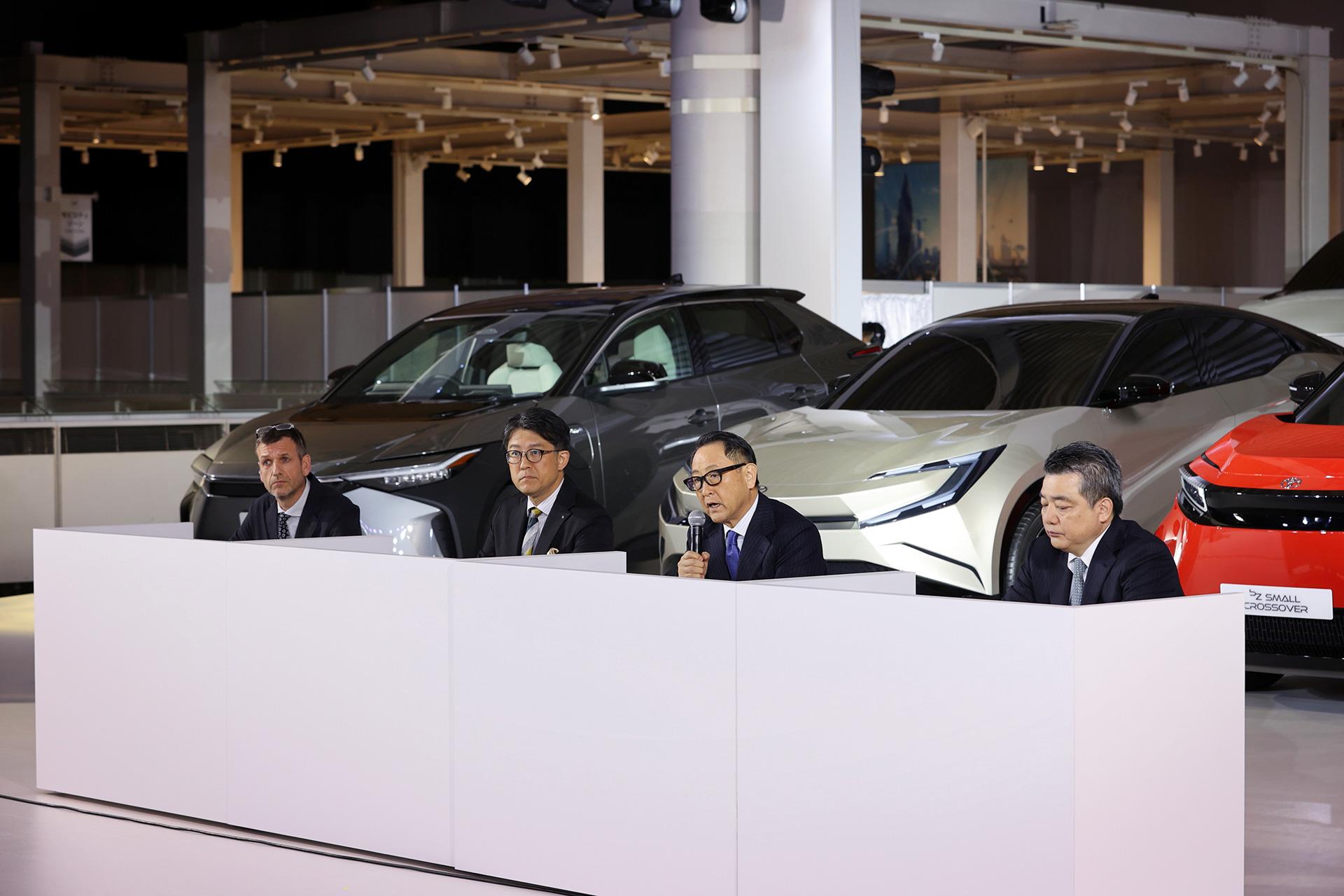
The speakers stressed the importance of Toyota’s multi-solution strategy while strengthening BEVs. This represents not only Toyota’s way of fighting for the future, but also its history of listening to customers and responding to their needs.
In other words, it is the result of Toyota’s commitment to diversity.
Toyota is now moving with all its power toward carbon neutrality while leaving no one in the industry behind, and without giving up on any technology that still has potential.
What has been, and will continue to be, at the center of Toyota’s full-lineup strategy is a strong will to leave no one behind.

